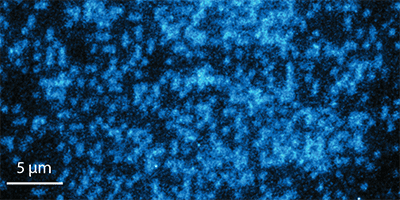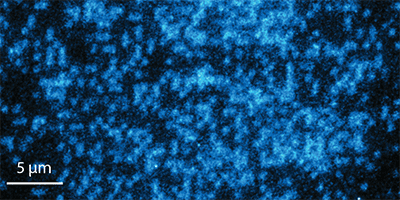Quantum Microscope Images Fermionic Atoms
Taking pictures of cold atoms in an optical trap requires illuminating them with a quick “flash” of light, which unfortunately heats them up and scatters them from the trap. Two new experiments get around this problem by using a set of laser beams that simultaneously cool the atoms while imaging them. These quantum gas microscopes are the first to work with fermionic atoms, providing the opportunity to use cold atoms to simulate electrons in strongly correlated systems, such as high-temperature superconductors or colossal magnetoresistance materials.
In the past few years, researchers have performed quantum gas microscopy for bosonic atoms in an optical lattice. The atoms are kept cool during the imaging process using optical molasses and other techniques. By contrast, fermionic atoms have proven less “photogenic,” mainly because atoms that happen to be fermionic, such as lithium-6 and potassium-40, are more difficult to cool. But two groups have now managed to image cold fermionic atoms: Martin Zwierlein and his colleagues at the Massachusetts Institute of Technology demonstrate their technique with potassium atoms, while Markus Greiner and his colleagues at Harvard University do the same with lithium atoms.
Both teams cooled their atoms to microkelvin temperatures and then loaded them into a single, horizontal layer of an optical lattice with roughly half-micrometer spacing. The atoms were kept cool using Raman sideband cooling, in which a pair of lasers removes vibrational energy from trapped atoms by stimulating a spin-flip transition between two closely spaced vibrational levels in the electronic ground state. A third laser pumped the atoms into an electronically excited state, from which they spontaneously emitted light and returned to their original spin state to start the cycle over. A lens-camera setup recorded the atomic emission with sufficient resolution that the researchers could determine whether a site was occupied or not. This ability to image individual atoms in the lattice will help physicists test theories of low-temperature electronic systems.
This research is published in Physical Review Letters.
–Michael Schirber
Editor’s Note: A third experiment, by researchers at the University of Strathclyde in Glasgow, recently achieved a quantum gas microscope with potassium atoms using a different cooling technique (called EIT cooling), as reported here.





